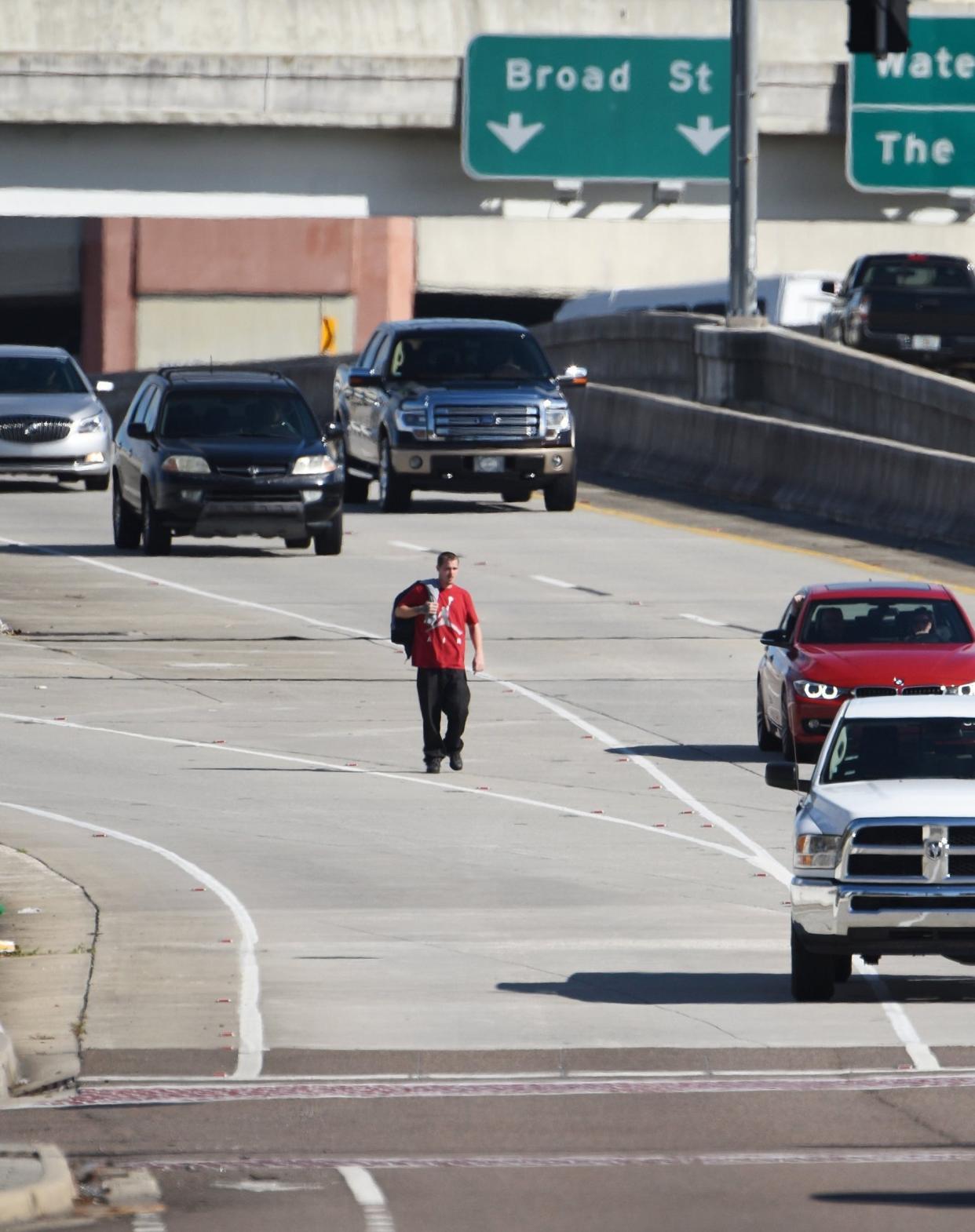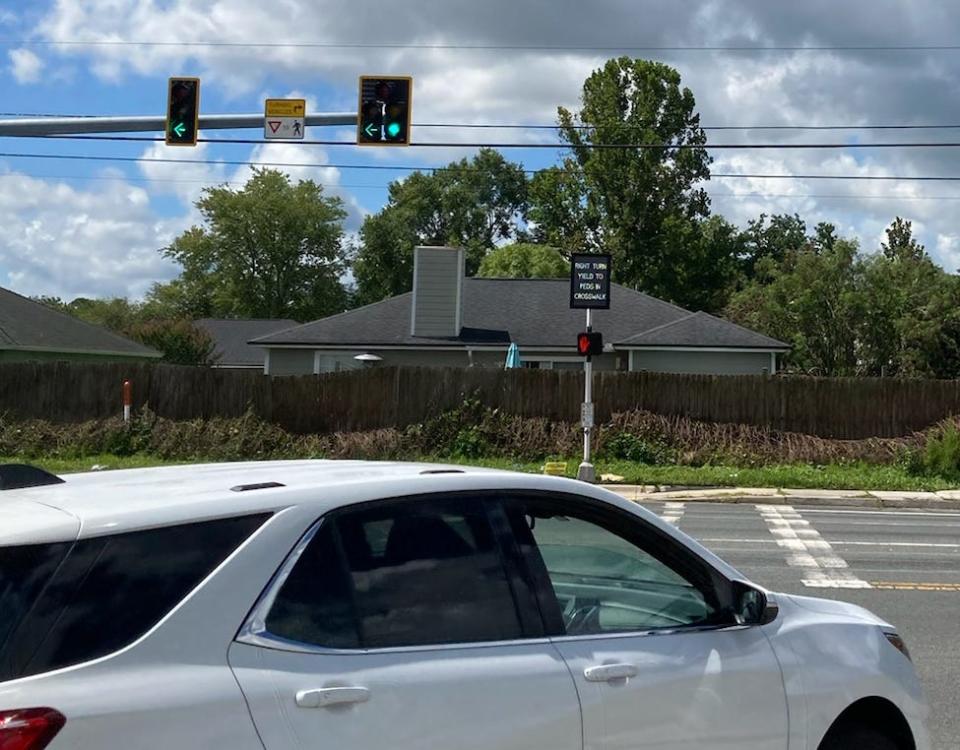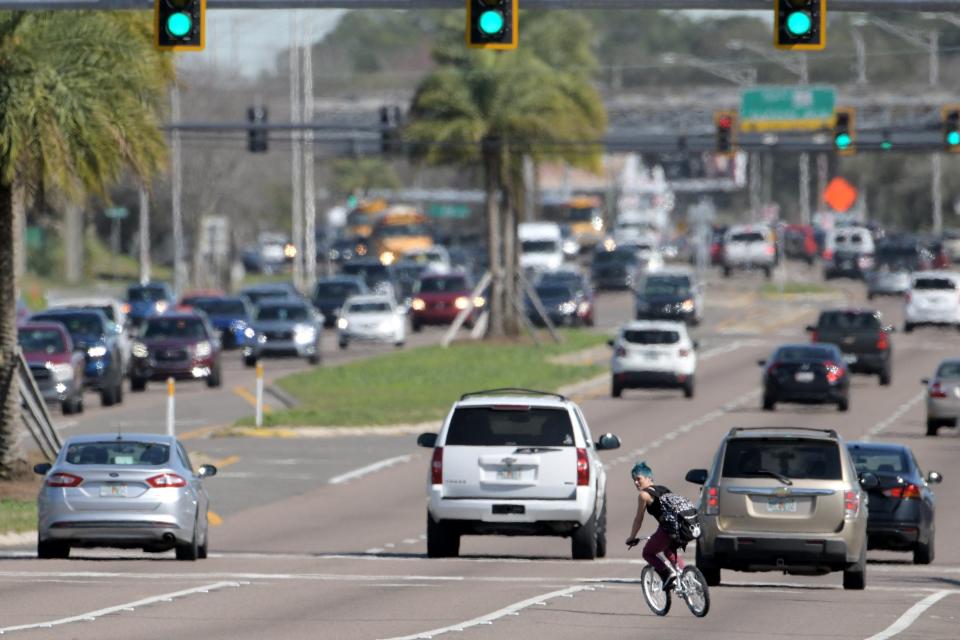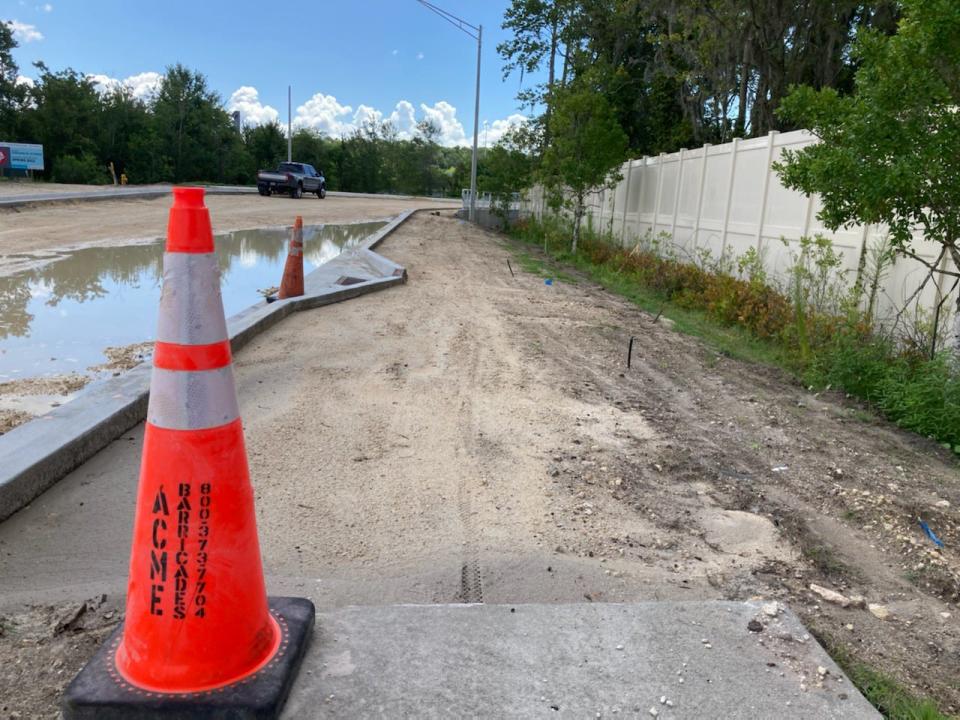Jacksonville is No. 6 in highest U.S. pedestrian fatality rates as deaths rise nationally

Pedestrians around Jacksonville continue to die in traffic mishaps more and more frequently, says a report released Tuesday that ranks the metro area’s fatality rate at sixth-highest in the country.
The rate of Jacksonville-area fatalities reported by the nonprofit Smart Growth America had risen by almost one-third since the late 2000s, but the woman who oversaw the report’s creation said rising fatality rates are common nationally.
“Nearly everywhere is getting worse,” said Beth Osborne, director of Transportation for America, the arm of Smart Growth America that created the yearly report “Dangerous by Design.”
The report, which tracks fatalities in the country’s 100 largest metro areas, noted that the nine communities with highest rates in the new report all exceeded the rate that had been the country’s worst just five years ago.
Osborne said the shift reflected state and local governments designing roads that “prioritize speed over safety.”
She said about 60 percent of fatalities have been happening on arterial roads that are away from interstates and account for just 15 percent of the country’s roads.
That meshed with observations of a Jacksonville resident who sits on a pair of local boards where traffic safety is a consistent concern.

“We have lot of arterials in the city that are four and five lanes wide where the speeding is rampant, to tell you the truth,” Larry Roberts said without being told about Osborne’s comments. “There’s a lot of roads with speed limits of 45 mph but people drive at 55 or 60 mph. if a pedestrian is hit by a vehicle going that speed, it’s almost certain they’re going to die.”
Local advisor: Jacksonville needs to prioritize pedestrian safety
Roberts, president of the JTC Running club that operates the Gate River Run, said that during the decade he’s spent around the city’s Bicycle-Pedestrian Advisory Committee and the Context Sensitive Streets Standards Committee, he’s seen deliberate efforts to make streets safer – but not the resources to change things fast.
“Their heart is in the right place, but there’s just so much more to do,” he said. “We’ve got nowhere near enough.”
Roberts said new neighborhoods generally are being built with sidewalks and designs that keep pedestrians safe. But he said some older neighborhoods, some concentrated in Northwest Jacksonville, were built without sidewalks or safe ways for people who depend on bus travel to cross roads to get their rides.
“We’re spending a lot of money in the [city] budget I’ve been reading about,” he said of the expected $1.5 billion annual spending plan Mayor Lenny Curry will propose to the City Council July 21. “I think it just needs to shift priorities slightly, so we take pedestrians into account.”

A draft of a five-year capital improvements budget Curry’s administration was developing last week included $19.5 million to be spent in 2024 and 2025 on a “complete streets” project on University Boulevard. Complete streets is a term used by organizations like Smart Growth America to mean streets that account for the needs of pedestrians, cyclists and others as well as cars and trucks.
City officials didn’t respond to a request Monday for more information about the University project, such as the project’s boundaries on the road crossing parts of Arlington and the Southside.
The draft capital budget also included $4 million in 2023-24 for “pedestrian enhancements” on Hogan Street downtown as well as $1.2 million in the coming year for traffic calming – which can slow traffic and improve safety – on Main Street between First and 12th Streets in Springfield.
The draft also continues a road safety project to improve pedestrian crossings citywide on a budget of $300,000 annually for the next five years.
How that would affect pedestrian safety is of course an open question, but Osborne said communities need to make widespread changes to curb the worsening trend.
“It’s not enough to fix one corridor,” she said. “We have to fix every corridor. Safety has to be the default.”

'When it comes to human lives, the only acceptable number is zero'
A spokesperson for Florida’s Department of Transportation said the agency was still reviewing the report, but has had ongoing safety efforts including an initiative called Target Zero aspiring to eliminate serious injuries and fatalities entirely.
“While we recognize achieving zero will not be easy, when it comes to human lives, the only acceptable number is zero,” district FDOT Communications Manager Tracy Hisler-Pace said by email.
In September, the state adopted a strategic plan for improving pedestrian and cyclist safety that involved ongoing analysis of crash data. A state report on the plan said fatalities involving SUVs were rising faster (a 50 percent increase from 2013 to 2017) than sedans (30 percent), and that about three-quarters of crashes involving pedestrians happen away from intersections, while intersections are the site of close to half of automobile-bicycle crashes.
The report said about 44 percent of pedestrian deaths on the state highway system happened on roads with posted speed limits of 45 mph, followed by 19 percent on roads with a 40 mph speed limit.
Florida communities have chronically had some of the country’s highest pedestrian death rates, and this year’s report counted Deltona-Daytona Beach-Ormond Beach metro area as the country’s highest death rate, averaging 4.25 per 100,000 residents. That was based on deaths between 2016 and 2020, the most recent years available.
The Tampa-St. Petersburg-Clearwater area followed at No. 4 nationally, with 3.55 deaths per 100,000 people, then Jacksonville, sixth-highest nationally with 3.44 deaths per 100,000 people in the five-county metro area including Duval, Nassau, Baker, Clay and St. Johns counties. The Orlando-Kissimmee-Sanford area, which ranked No. 1 last year, had the eighth-highest rate at 3.37 deaths per 100,000.
By comparison to Jacksonville’s sixth-ranking this year, the metro area had been ranked No. 4 nationally in 2009, when the death rate for 2007-08 was 2.61 deaths per 100,000 people. Jacksonville ranked No. 10 in the report last year.
This article originally appeared on Florida Times-Union: Pedestrian death rate rises in Jacksonville as other towns' mount too

